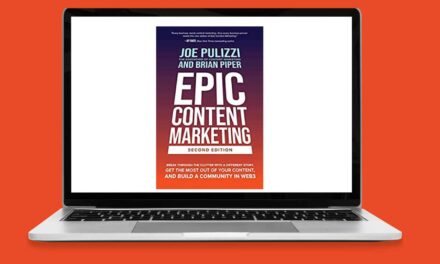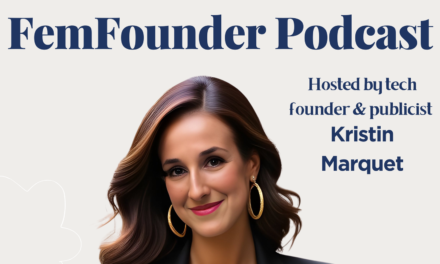Branching Out: Sponsored Content and Affiliate Links
Marc Andre is a personal finance blogger with vitaldollar.com. He’s been a content marketer and online publisher for the past decade; Andre says that, early on, he made all of his income from advertising. But that changed; over the years, he’s moved away from that business model.
Sponsored content is becoming increasingly popular, he says. “The sponsor will get prime placement and visibility, and publishers are able to charge advertisers accordingly. There are a growing number of companies that are interested in the exposure that bloggers and publishers can provide.”
Affiliate links are another way to generate income through content, says Andre. While not possible or appropriate for all publishers, he says, “in the right situation it can be a great source of income.” Not all publishers, he says, will use affiliate links because some prefer to take a more neutral approach, avoiding the appearance of promoting or endorsing third-party products or services.
With affiliate marketing, publishers embed a URL into an article at the point where a specified product or offer is mentioned. If that product is purchased because someone clicked on that link, you get a portion of the proceeds.
Diversification: Conferences, Podcasts, and Beyond
Some publishers are branching out beyond content, offering other products and services. David Erickson is the principal of e-Strategy Media, co-host of the podcast Beyond Social Media Show, and a digital marketing and public relations expert in the Minneapolis area, who has worked with brands for more than 2 decades to help them succeed in the online environment. For instance, Erickson says he’s been seeing more publishers move into the event marketing space. They’re using the audience they already have and are then selling tickets to in-person events like conferences, he says. “This allows them to monetize their audience while also creating revenue streams via sponsorships and vendor placements without, necessarily, having to create the content themselves, which is supplied by subject matter expert speakers.”
Erickson predicts that this model will evolve to focus on “the creation of online courses developed in collaboration with advertisers.” Publishers, he says, will be able to charge other publishers for access to an audience and custom content creation, while also charging for enrollment in these courses. “Another model that I have yet to see—but I think would prove successful—is native podcast advertising,” says Erickson. “Rather than inserting audio ads or host-read sponsored messages that interrupt the podcast, include advertiser-supplied subject matter experts as an integral part of each episode. That could come in the form of a regular sponsored guest, an interview, or a sponsored segment.” Of course, he adds, that content would have to represent value to the listener.
A Return to Subscription Revenue
What goes around, comes around, they say. That certainly seems to be true with regard to subscriptions. “Quality publishers are moving back toward the subscription business model out of necessity,” says Keith Sibson, VP of product and marketing at PostUp, a company that offers audience development and monetization solutions for publishers.
“In the programmatic advertising world, ads pay the same amount to publishers regardless of the content type,” Sibson says. “Consider a thoroughly researched article by journalists that traveled to the other side of the world for a month. Per page view, this article generates exactly the same amount of revenue as a picture of a diaper-wearing Chihuahua copied from Reddit.” In the programmatic advertising world, he says, clickbait kills quality journalism.
Increasingly, consumers are willing to pay for quality and enhanced user experience. But not all publishers will be successful here, says Krátký-Katz. “It really depends on how exclusive or premium your content is,” he says. “BuzzFeed, for example; they could try it, but I don’t think there are many people on the planet that would pay a subscription to BuzzFeed. But, with premium publishers like The Washington Post or The Guardian, I’m sure they could have some uptake there.” It’s not an either/or argument, he points out. “It’s not one or the other—it’s a mix,” says Krátký-Katz. “They need to be able to intelligently monetize the right users in the right way, and the way the user wants to be monetized.”
Thinking Creatively
Have publishers entered a post-advertising world? Not according to Jennifer Chen, chief revenue officer at Connatix, a next-generation video platform for publishers. Publishers, she adds, need not fear a “post-advertising world.” In fact, she says, “I think it is a little misguided to think that publishers can survive without advertising—it would be akin to Armageddon. Even the top publishers, with massive subscription revenues, still need advertising to be able to invest in high-quality editorial staff and content.”
While advertising will continue to serve as a revenue source for publishers, the forms that advertising takes will continue to shift in a “post-social media world.” Consumers, she says, “have become used to online platforms like Instagram and Snapchat that have changed the way they want to interact with content elsewhere, including advertising.” Publishers have an opportunity now to “take back some of the market social media has monopolized over the last few years.”
According to Chen, “Publishers now need to focus on ways to integrate solutions that enhance the reader experience and simultaneously provide new opportunities to monetize, like vertical video or socially enhanced content solutions.” These are new solutions for publishers but, she says, they have the potential to be tested to determine what works best with specific audiences. It’s no longer about one or the other when it comes to engagement and monetization, says Chen. “It’s about the full package.”
One relatively new addition to the options for getting content in front of consumers is Pushly. Established in 2017, it helps publishers “take back control of their content distribution.” They do this through a tool that allows readers to opt-in to receive push notifications from publishers like Meredith. What they’re doing, says Lance Hemenway, VP of marketing/creative development at ReachMobi, “is offering publications a way to re-engage their readers and bring them back to the site.” It’s hard to hold readers’ attention online, Hemenway acknowledges. “What we’re hearing back from a lot of our publishing partners and clients is that, because of the on-demand world we now live in, people go to sites, and they then bounce off to six others—and it’s hard to hold onto them.” Based on its opt-in model, Pushly clients must be publishers that provide high-quality content valued by their audience.
“It’s not going to be a mom-and-pop shop,” says Katie Raymon, marketing specialist with ReachMobi. “It’s going to be somebody posting, on a regular basis, that is regarded as an industry leader—someone known to provide trustworthy content.”
“It’s one of those garbage-in, garbage-out kind of things,” says Hemenway. “I think the industry is learning that if you don’t have anything valuable or worthwhile to show people, they’ll go away. There are a million other things for them to look at.” Pushly, says Hemenway, “is not a tool for affiliate spamming.” While the tools and methods of successfully getting in front of target audiences may continually shift and change, one thing remains a constant in the cluttered space of online marketing, regardless of channel or tool: Quality is a must-have.






